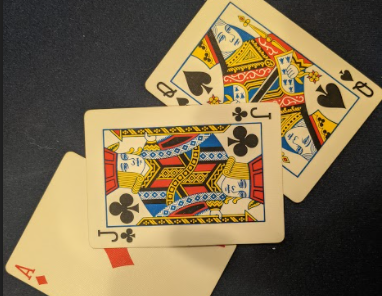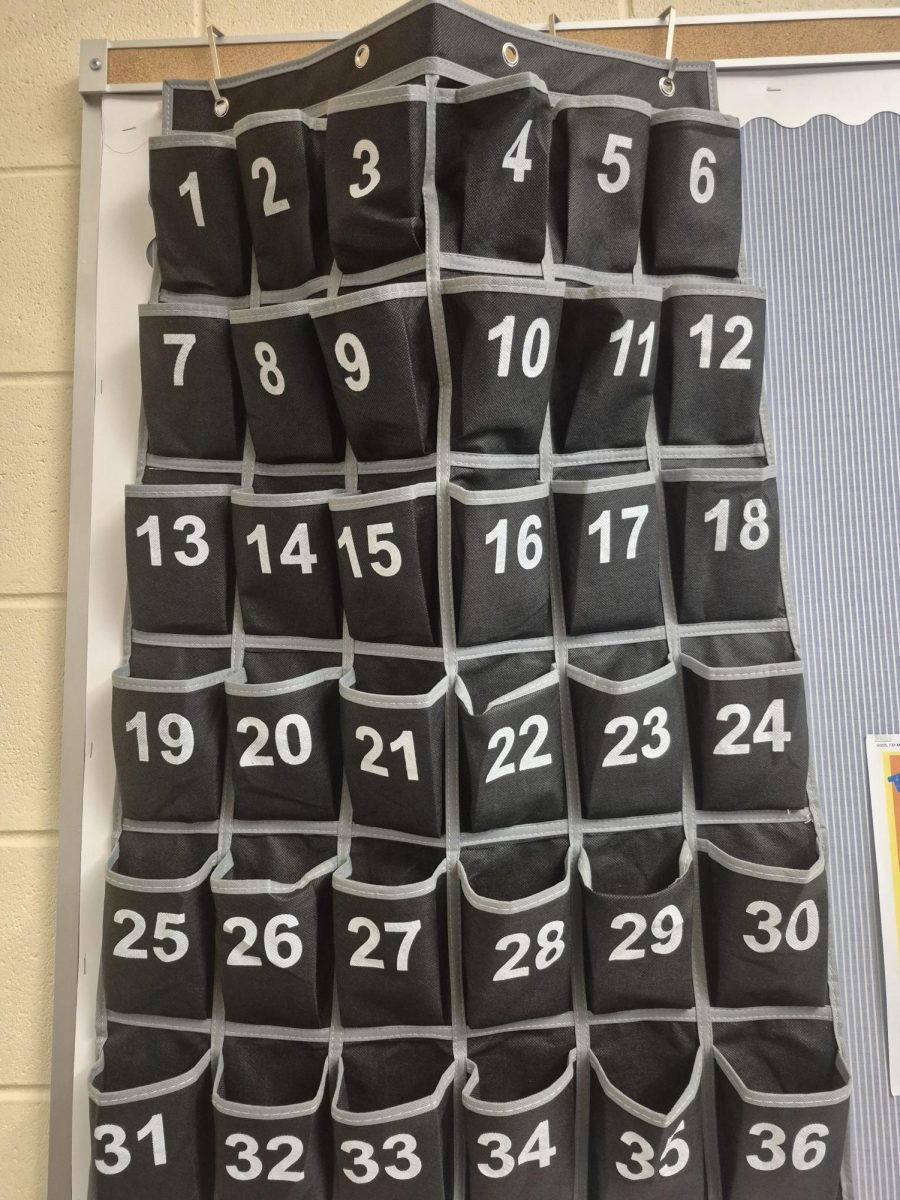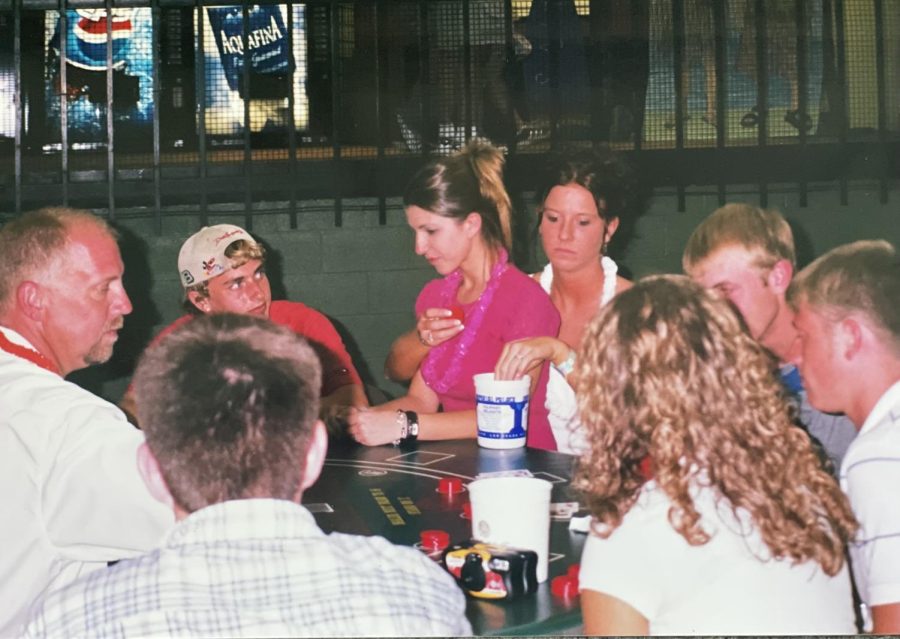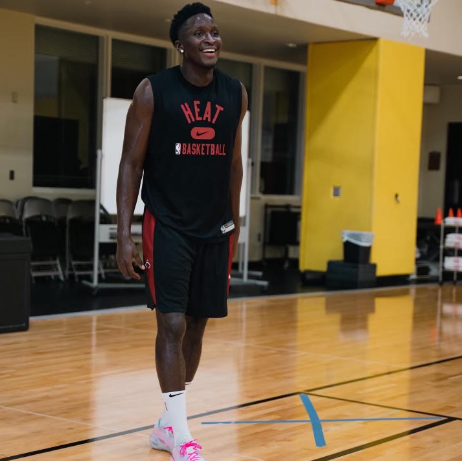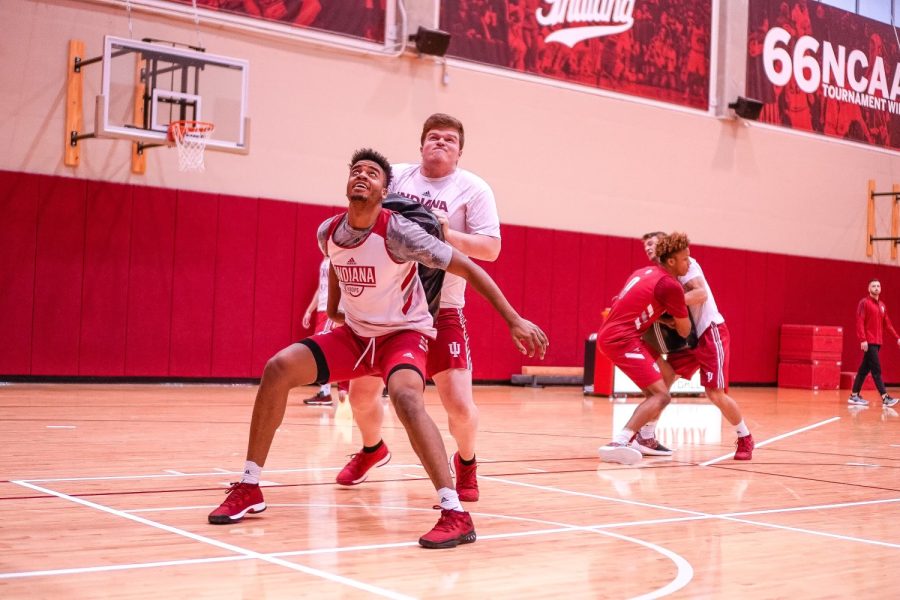The loud noise of slot machines and the buzz of conversation fill the space. At the Blue Chip Casino in Michigan City, Indiana, small groups bustle about from the slot machines to the tall roulette tables to the $5 blackjack tables. These half-circle tables are tucked in a corner just beyond the slot machines right before the poker tables.
The $5 tables don’t get a lot of interest from passers-by or the casino security. The tables seat moms craving a break from their kids. Weekend poker buddies out for a night. Grandmas looking to make a few extra bucks. This is the home of the low-rollers. People who would be happy to just walk away with positive earnings. But at one of these small tables, a group of three college students sit in the tall black chairs, knowing they are likely about to land a good chunk of money.
Two of the college girls, one preparing to graduate to become an actuary and the other preparing to graduate to become a high school math teacher, exchange a confident glance. One reaches down towards the green felt table and stacks a few of her red chips on top of one another and places her substantial bet. The dealer shuffles the deck of cards with speed and begins dealing them one by one to each of the five students seated around the half-circle table. The girl who had placed the high bet smirks as she picks up her cards with conviction. She flips up another winning hand, a blackjack.
A couple stops and watches as the young woman seizes all of her winnings. The man murmurs, “Now that’s some serious luck.” The woman shakes her head, “No, she has to be cheating.”
Yet, her success was not due to luck. Nor was it due to cheating. Rather, this group of college students had spent about 16 weeks developing the skill of card counting. Among this group of college students was West Ottawa Math Instructor Shanna Meyer. She had mastered the skill of card counting and it had paid off. Well, it paid off this time.
Although Meyer and her friends had managed each round to successfully add, subtract, multiply, and divide card numbers in just three seconds, they had failed to keep a straight face. The video cameras watching from above (the “eye in the sky”) had noticed one of the students counting and mouthing out numbers.
While card counting is in no way illegal, it is quite frowned upon because the house ends up losing the advantage. It didn’t take long for the pit boss, a man in a formal black suit, to make his way over to the table where Meyer and her friends were playing. Meyer remembers feeling panic when he showed up at their table, knowing they were likely busted. After finishing another successful hand, the man tapped Meyer and her partners on the shoulder and asked them to collect their things and leave. He escorted them to the teller where they cashed out their winnings and then told them they were no longer welcome at that casino.
The casino treated Meyer and her friends to a free dinner at the casino restaurant. There, they were surprised to find a beautiful buffet of crab legs, lobster tails, prime rib, and so much more. After finishing dinner, they left the casino to head back to Allendale with their winnings in their pockets. Each one of them was able to pay down some of their college expenses, and, of course, have a fun story to share.
Meyer and her friends were not everyday gamblers. In fact, this was the first and only time Meyer ever set foot in a casino. Her interest was not in gambling, but in learning new mathematical concepts. She was interested in the topic and how mathematics applied, the cash was just a bonus.
As a high school student, Meyer explains that she actually struggled a lot throughout her high school math classes. She was never a “straight A” math student, and she had to work really hard to understand math. “I put my transcript in the back of my classroom to kind of symbolize that you don’t have to get perfect grades to be where you want to be in life. I want to show that even though I worked hard, it’s okay if things don’t connect right away,” Meyer said.
She transformed her high school struggle with math into a drive for helping her students. “I figured that I should teach a subject that I know how to struggle in. That way I can use that to help teach students how to get through a struggle, the same way I did,” Meyer said.
Despite math not coming easily to Meyer, she was passionate about learning math and said, “Math has always been something that I have enjoyed learning, and I never minded putting in the work for it.”
Therefore, as she was doing research for her undergraduate thesis on statistics and probability at Grand Valley State University (GVSU), she was drawn to learn more about card counting and the mathematics behind it. Card counting is a mathematical skill used in the game of blackjack.
In the game of blackjack, the main objective is to beat the dealer and score as close to 21 as possible. The cards someone wants to get in blackjack are a 10 or a face card, and then an ace alone, equalling 21. By card counting, the player has an advantage over the dealer if they figure out how many high numbered cards, how many low numbered cards, and how many neutral cards there are left in the certain number of decks.
Meyer explains that while card counting will not necessarily guarantee a win, it can increase your chances of getting a blackjack. Card counting may be helpful in winning extra cash, but the whole process is quite complicated.
“When you do card counting, you’re assigning a number to each card. I do a high-low strategy. If a card is 2, 3, 4 5, or 6, then you add 1 because the chances of getting a higher card are increased. If it’s 7, 8, or 9, you add a 0, then if it’s 10, a face card, or an ace, you subtract 1 because the chances of getting a higher card are decreased. If you have a higher number on the card count then you’re going to want to bet more, and if you have a lower number on the card count, then you’re going to want to bet less. The chance of you busting is greater. The whole card counting system is just a series of adding one, subtracting one, or adding zero as the dealer places cards out on the table,” Meyer said.
As overwhelming as the process may seem, Meyer explains that “Card counting is a very common unit in discrete math classes. You don’t have to be super great at math to understand what’s happening, but it’s just very fast…If you’re good at counting and dividing, then sure, you might be amazing at it.”
Though the concept itself may not be difficult to learn, card counting requires trying to apply the math within a two-three second time period.
“As the dealer is dealing the cards, you have to keep the count in your head while trying to keep a straight face. Honestly, you have to also know how many decks of cards they used in the beginning. If they used five decks of cards, you have to take the count and divide by five to get a ‘true count’, which isn’t always easy in a two-three second period of time. You have to do all of this calculating before you place your bet. If you lose track at any time, there’s no way of coming back. You lost,” Meyer said.
Today, all the information about card counting could be found at the click of a button through a phone or google search. When Meyer was in college, however, “…the research wasn’t so prevalent, we didn’t have the internet so we actually had to learn card counting through the library. We had to check out books, newspapers, and articles of sorts,” Meyer said.
It is no wonder it took Meyer and her friends about 16 weeks to understand card counting and have enough confidence in their understanding and put it into action. Despite spending hours nose deep in books, Meyer said, “it was a great way to take a break from our research papers and still do something math-related.”
John Golden, one of Meyer’s GVSU mathematics professors, also considers understanding card counting a great way to expand one’s mathematical knowledge.
“It (card counting) is a very definite part of mathematics, and I had a class of senior math majors who wanted to investigate it, so we did. We looked at the relatively simple counting strategies for one deck. Probability became a study in mathematics because people were interested in gambling, so I like the connection. I do not endorse people gambling, but I do endorse that people who want to gamble understand the mathematics,” Golden said.
Golden also commented on the importance of mathematics altogether. “Math skills have 3 big points to me. One, it’s a powerful way to make sense of the world. For example, being able to check whether there was fraud in the election, or understand when someone is making a terrible argument. Two, it expands your choices in life, allowing for more careers or doing better at the career you choose. Three, it is a great way to learn problem-solving, and being a better problem solver helps a LOT in life.”
Mathematics has clearly created many opportunities for Meyer. While math didn’t click for Meyer right away, her persistence and desire to learn math allowed her to become the compassionate high school math teacher she is today.
With her imperfect high school transcript framed on a bulletin board in the back of her room, she reminds students that it is okay to struggle. Meyer strives to encourage her students that success in life does not come from the grades they get, but from having the drive to be successful and seeking to better themselves.
Meyer is now happy to be using her math skills in a classroom rather than a casino, but she will never regret nor forget getting “rich” at the Blue Chip Casino.

